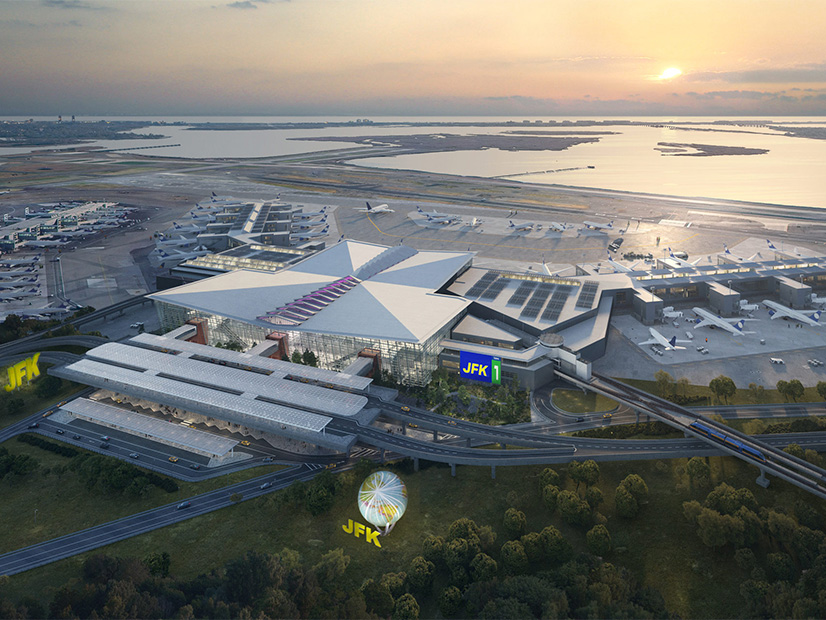
New York’s John F. Kennedy International Airport is planning an 11.34-MW microgrid powered by solar and fuel cells to cut emissions and continue operations during power outages.
The plan is part of the replacement of three international terminals at JFK with New Terminal One — a 2.4-million-square-foot facility with a $9.5 billion price tag.
It includes rooftop solar panels with 7.66 MW of generating capacity; fuel cells with 3.68 MW capacity; and batteries rated at 2 MW/4 MWH.
The microgrid will be configured in four separate systems that will be connected to the power grid but also able to function independently and to power the airport if needed. The project will use re-claimed heat to generate chilled water and heating hot water and is expected to result in a 38% reduction in greenhouse gas emissions.
AlphaStruxure on Thursday announced the agreement to design, build and operate the microgrid. The Boston-based company is a joint venture of investment firm Carlyle and energy infrastructure firm Schneider Electric.
No price tag was announced for the microgrid, which will operate under an energy-as-a-service contract.
Construction of New Terminal One began in September. The first gates are expected to open in 2026, and completion is targeted for 2030.
The more than 13,000 rooftop solar panels will be the most at any U.S. airport and will make JFK the first transit hub in the New York City region that can function off-grid during power interruptions.
Many military airfields have microgrids, and a growing number of civilian airports are adding such capacity. Pittsburgh International Airport in 2021 said it became the first airport in the world to be fully powered by an on-site microgrid.
As at JFK, the Pittsburgh microgrid was built, paid for and operated by an outside company — Peoples Gas. A notable difference is that the 20-MW system relies on five generators burning natural gas from on-site wells to supplement its roughly 10,000 solar panels.
The zero-emissions microgrid at JFK will mesh with the decarbonization goals of the Port Authority of New York and New Jersey, which operates the airport.
New Terminal One CEO Gerrard Bushell said “sustainability and resilience” are central to the airport’s overhaul.
“This is future-focused infrastructure that will facilitate the transition away from fossil fuels and sets a new standard for large-scale renewable development in New York and in the air transit sector,” he said. The partnership with AlphaStruxure also provides New Terminal One with price certainty, insulating the terminal from volatile energy markets, he added.


